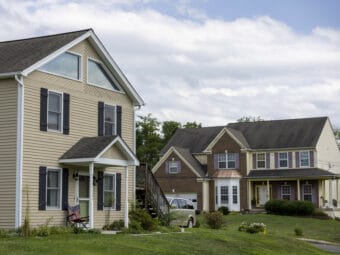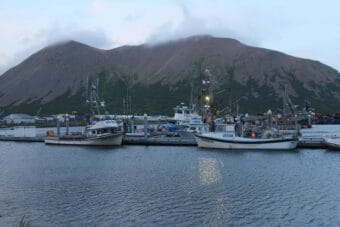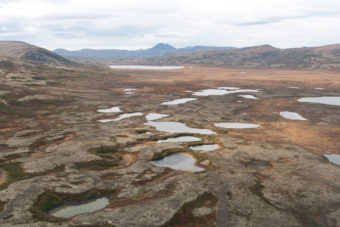
Consumer prices have been rising sharply across the country as the demand for energy, cars, food and other goods returns while supply chains keep struggling to rebound from the COVID-19 pandemic. The same is true in Alaska, where Anchorage has seen a consumer price increase of more than 6% in the last year.
Alaska Public Media’s Kavitha George spoke to state Department of Labor and Workforce Development economist Neal Fried to learn more about what’s causing this recent inflation.
Kavitha George: Prices in the Anchorage area increased 2.5% over the past two months and 6.2% over the last year. How big a jump is that? And what’s the significance?
Neal Fried: It’s quite significant. I don’t pay much attention to two-and-a-half percent from just two months ago. The significance is the annual one — June [2020] to June [2021]. That’s what tells us the most about what’s happening to inflation. In fact, 6.2% is the highest we’ve seen since 1990, over 30 years ago. So it’s pretty significant.
And this is happening around the country — it’s about 5.4% [nationwide]. So ours is actually a little higher than the rest of the country for the annual rate of inflation.
Kavitha George: And where are we seeing these price increases?
Neal Fried: We’re seeing a lot of different areas. The very big one, of course, is under transportation. Transportation overall went up by almost 27%. And that includes a lot of things. One of the ones that really jumps out, which is just really strange, is used cars. The annual count went up 47%. In other words, what they’re saying is if you buy a used car today in the Anchorage area, you’re going to pay 47% more than you would have a year ago. And that’s a really striking, big number.
The other part of transportation that went way up is gasoline prices, by about 42%. Energy prices went way up, and part of that is because they were so low a year ago.
Another one that’s kind of interesting for Alaskans — Alaskans spend a little more money in the recreational area. That went up by a little over 5%. So we saw bigger increases in recreation than we’ve seen in a while.
Kavitha George: Why are we seeing this spike in prices?
Neal Fried: What’s happened with many of these things is demand has increased very rapidly. And in some cases, not only has demand increased, but there are supply chain issues and other supply constraints out there. So some of it’s like catch-up from the pandemic, and some of it’s supply chain. And it’ll be interesting to see if this inflationary environment that we’re in right now is going to last for a while.
Kavitha George: How much of this spike is influenced by increased demand for energy and a jump in energy prices?
Neal Fried: A big part of it. But even if we excluded energy prices, it’s still pretty high. It’s 5.4%. So although energy prices is a driver here, it’s certainly not the only one.
Kavitha George: What’s the importance of the consumer price index? How does it show up in everyday life?
Neal Fried: This index is used a lot in a practical ways, unlike most economic statistics. Every year, people’s labor contracts are often adjusted by the consumer price index. The minimum wage each year in Alaska is adjusted by the the urban Alaska consumer price index. Even child support payments are sometimes adjusted by the consumer price index.
Kavitha George: Are we seeing the rise in consumer prices in more urban areas like Anchorage, the Mat-Su, maybe Fairbanks and Juneau, or all over the state?
Neal Fried: There’s no measure of it elsewhere, in the rural parts of the state. But my guess is it’s being felt all over the state, just like it’s being felt all over the country, because the price of many of those goods and services is not determined locally, but it’s determined nationally, and and sometimes internationally. For example, the price of energy, the price of an automobile, the price of clothing, those kinds of things. The change in the price, which is really important, is affected by national, international trends.
One of the things that can provide some sort of unique experience that might be different from another part of the state, or another part of the country is what happens to housing. But even a lot of that is driven by national trends like low interest rates — that’s not unique to Alaska.
Kavitha George: Looking ahead to the future, are there limiting factors that might slow down this trend of inflation at some point in the next year?
Neal Fried: There certainly could be. With supply chains, a lot of people do believe a lot of that will take care of itself over time. They’re already saying, for example, the whole used car thing they’re seeing at the national level, that that has peaked and is coming down now. Although, some of these supply chain issues, they’re worried that for [silicon] chips and stuff, those shortages can last for a couple of years. It also depends on demand, how well the economy continues to do and how well income does.
Kavitha George: Should we take these price increases as a sign that things are returning to normal post-pandemic?
Neal Fried: That’s part of the reason why it’s happening. But it’s also pointing out, it’s really not that normal. The economy is kind of moving, it’s recovering nicely, but not everything is recovering with it. We have these weird supply chain issues, which, we have never had something like this before that I know of. We’ve also seen a lot of income flow into our economy from the federal government. Income last year and this year so far has grown pretty significantly, which puts a demand on goods and services, and therefore has an impact on this consumer price index. So in a certain way, the answer is yes, but man, I don’t know what you would call normal these days.



